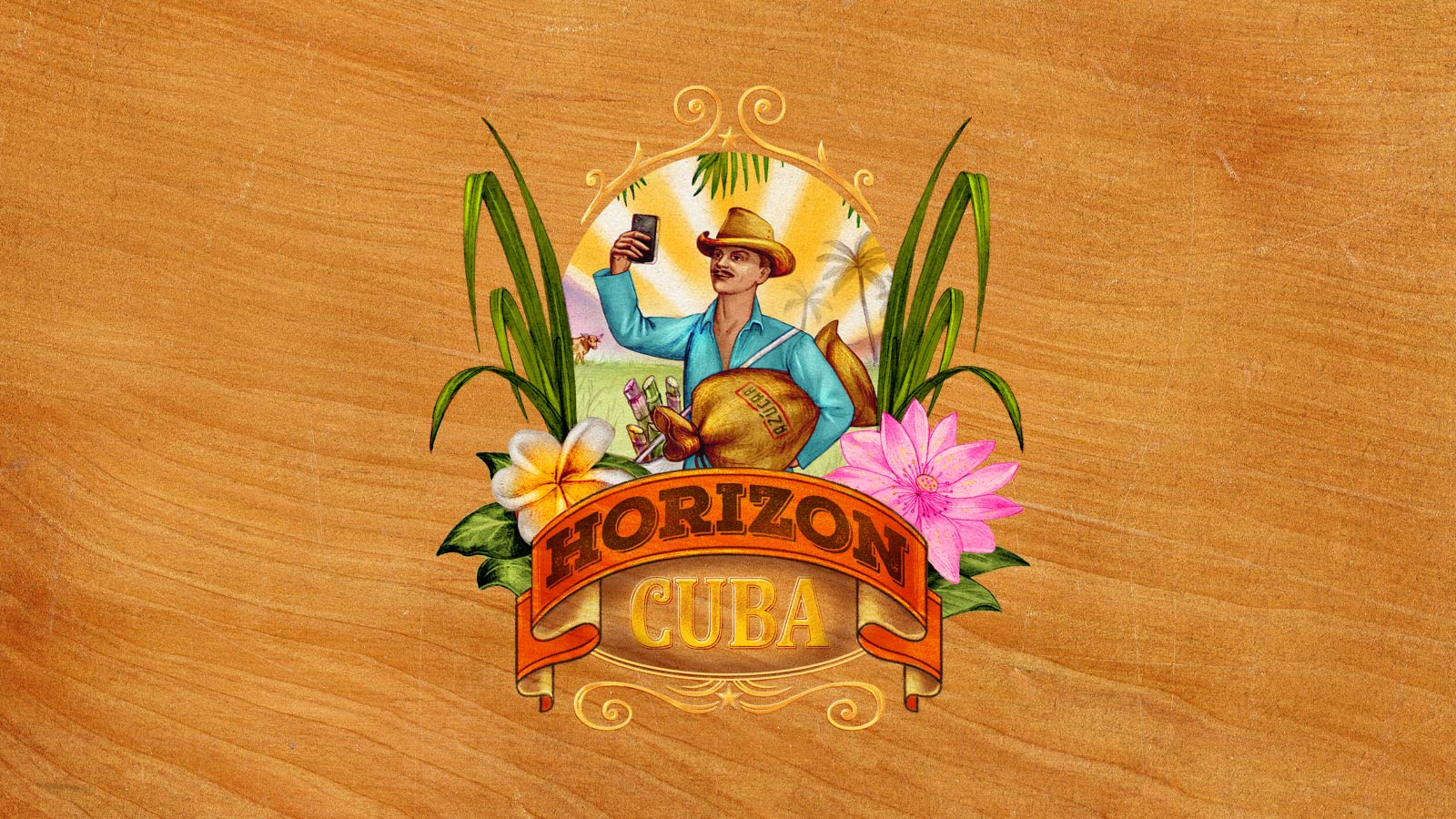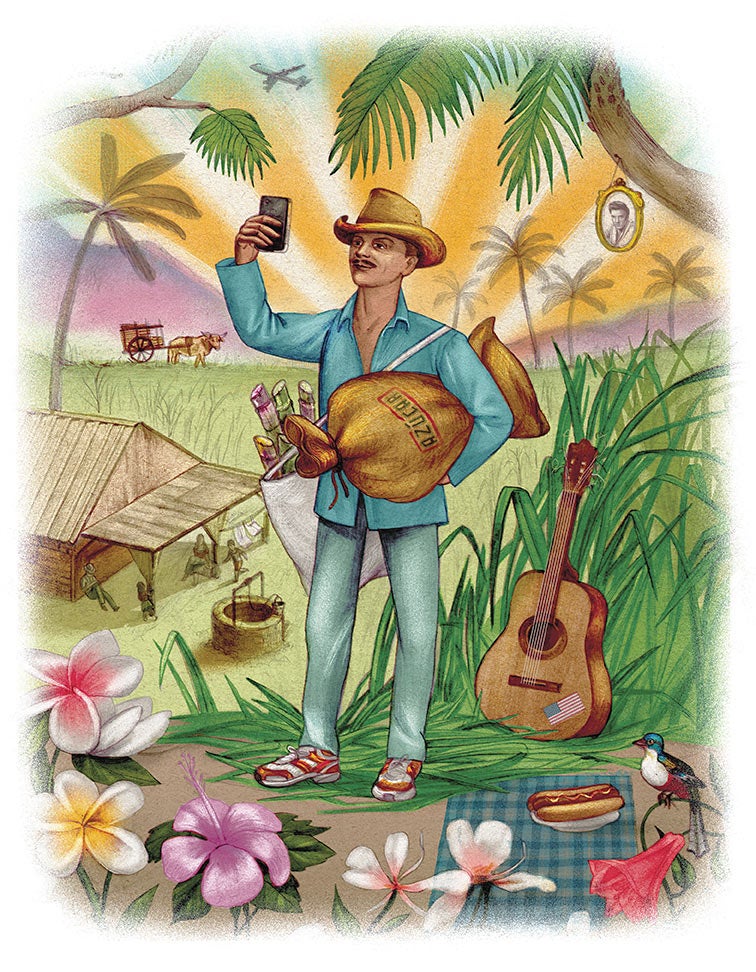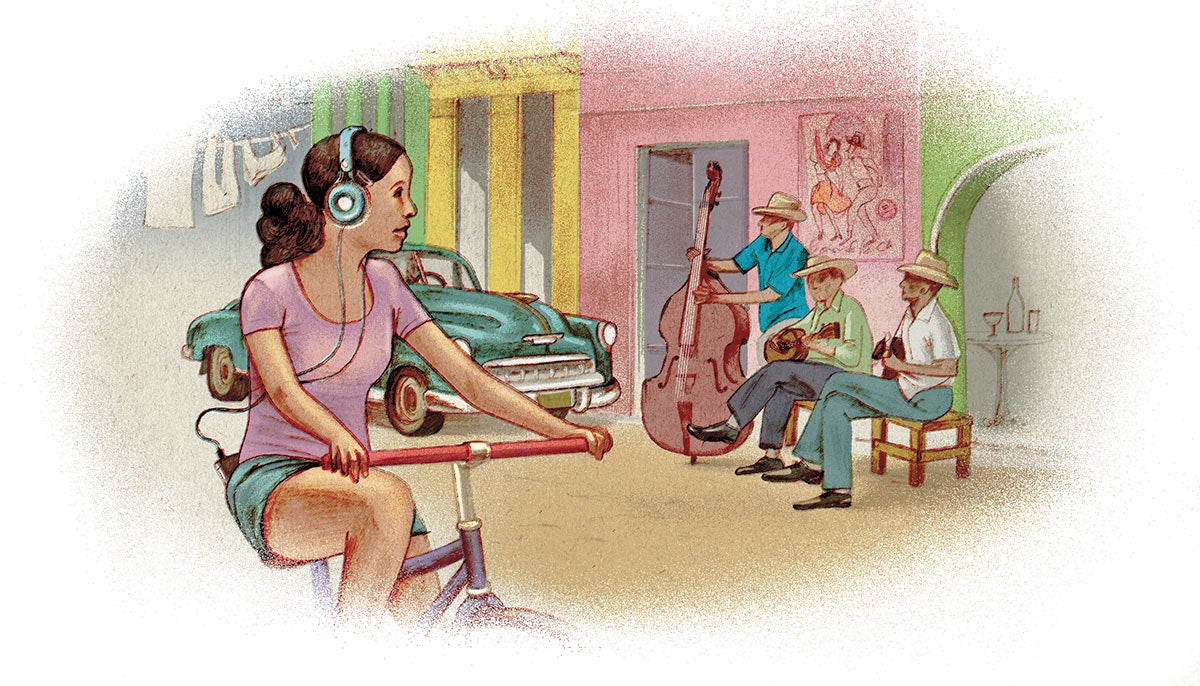
Horizon Cuba
Summer 2015 | By Mary Frances Emmons
“Let me tell you a story,” says Cuban-American poet Cecilia Rodríguez Milanés, “so you know where I’m coming from.”
 Born in the U.S. to Cuban parents, the UCF associate professor of English first traveled to the island in the late 1970s, “when Castro opened doors to the exile community.” She remembers visiting family in Havana and in the much poorer interior, where her relatives made do with thatched roofs and dirt floors. “When you think of campesinos [farmers], that’s exactly what they were,” she says. “Very little backyard, a chicken or two — that’s all they owned. Everything else belonged to the pueblo, the government.”
Born in the U.S. to Cuban parents, the UCF associate professor of English first traveled to the island in the late 1970s, “when Castro opened doors to the exile community.” She remembers visiting family in Havana and in the much poorer interior, where her relatives made do with thatched roofs and dirt floors. “When you think of campesinos [farmers], that’s exactly what they were,” she says. “Very little backyard, a chicken or two — that’s all they owned. Everything else belonged to the pueblo, the government.”
Fast-forward to 2011 and another trip to Havana. She noticed that a cousin her age had an Acer computer “just like mine, with a huge monitor, and I was, like, ‘What?!’ ” “So of course we had to go to the interior. But there, their lives had not changed. They were just as poor as they had been,” with open pipes where faucets should have been and a toilet that worked “with a bucket,” she says. “That’s a contrast I didn’t expect to see.”
This tale of two Cubas — of the divide between the bold and eager to modernize and the vulnerable and impoverished — is what Cuba experts in the UCF community warn will be one of the many challenges faced by the U.S. as it tries to overcome 50 years of distrust and move toward a new normal.
“In the most significant changes in our policy in more than 50 years, we will end an outdated approach that, for decades, has failed to advance our interests, and instead we will begin to normalize relations between our two countries. Through these changes, we intend to create more opportunities for the American and Cuban people, and begin a new chapter among the nations of the Americas.”From President Barack Obama's Statement on Cuba policy changes, Dec. 17, 2014
Not So Fast
On Dec. 17, 2014, pundits everywhere hailed a thawing in the five-decade freeze between the United States and Cuba, dissolving the last remnants of the Cold War. But many authorities are sounding a more cautious note: It may be a long while until there’s a true flow of ideas, goods and travelers between these neighbors separated by 90 miles of open water and more than a century of misunderstanding.
“I’m not sure how much of a thaw we’re really going to see,” says international relations researcher Paul Vasquez, a lecturer in the Department of Political Science who is of Cuban ancestry. “Totally open trade and tourism won’t be possible in the immediate future because of laws passed on our side.
“A host of technical details could be stumbling blocks to whether we move ahead,” Vasquez says, citing Republican opposition in Congress, the future of the U.S. Naval Station Guantanamo Bay and support for Cuban dissidents — although the removal of Cuba in May from a U.S. list of states that sponsor terrorism eliminated one major hurdle to normalization. Vasquez predicts that internal politics in the U.S. may play a greater role in how the process unfolds than any discussions between the two nations.
“It’s more of a thawing than a thaw,” says Rosen College of Hospitality Management Professor Robertico Croes, who studies international tourism demand on small economies. “There’s always been a fascination with Cuba in the U.S. and the challenge it represented, especially with the large Cuban population in Florida,” says the associate dean of administration and finance. “From a tourism perspective, it’s something new and different; it [has fired] the imagination of Americans — for 50 years — and they will want to visit, for sure.
“In the long term, a lot depends on how things on the ground play out,” says Croes. “What will be the real policies of the Cuban government? That’s the wild card here.”
Ironically, according to Vasquez, the convictions that led the Obama administration to make this overture may hamper its progress. “Obama has tried to deal diplomatically without making a sustained, public media offensive in the U.S. as to why [restoring relations] might be a good thing,” he says. “Without effort at home to remind the public what those reasons are, it makes it easier for critics to take potshots.”
More Harm Than Good?
Assuming that normalization proceeds, the effect of re-establishing relations is likely to be complicated for Cubans and may bring more harm than good, some UCF experts fear.
The possible positive effects are easy to comprehend: The introduction of retailers like Wal-Mart and The Home Depot could mean “Cubans will finally have access to goods that they could not afford previously,” says associate professor of economics Mark Soskin. “It will be a huge boon to their quality of life and standard of living.” But according to Cuban history expert Luis Martínez-Fernández, the personal cost of that prosperity may be higher than the average Cuban is prepared to pay.
“Having followed the way in which the thaw is coming along, I don’t see positive change for the Cuban people,” says the UCF professor of history, who was born on the island and raised in the U.S. and Latin America. For foreign capital to succeed in Cuba, “it will depend on continuation of an authoritarian regime that limits Cuban labor, limits labor unions, limits Cuban workers,” Martínez-Fernández explains. He says U.S. businesses are motivated to enter Cuba not out of humanitarian or democratic interests but “to create a miniature floating China 90 miles from the U.S. coast.”
Soskin agrees that much depends on whether Cuba decides to take “a China path,” which he describes as when countries enact a business plan that “shortcuts what the U.S. does, leaving out some of the messy things like democracy” and a free economy. “My biggest concern is we’ll go back to 1898,” says Martínez-Fernández. “Cuba was bankrupt, and the Cuban elite had been impoverished by 30 years of war. [The elite] lost control, and U.S. capital flowed in without the ability of Cubans to contest. It created an economy of enclaves.”
Returning U.S. investment could re-establish such enclaves — enormous resorts, major port facilities, “areas in which U.S. capital dominates, similar to how the sugar plantations used to be,” Martínez-Fernández explains. “What I see is a rather unholy alliance between extreme capitalism and authoritarianism on the island. It’s a wonderful opportunity for Raúl [Castro] to prop up an insolvent regime without having to yield any power. Cuban dissidents have been vocal in warning that the U.S. should not give allowances to the Cuban government without demanding better human rights.”
“The issue of human rights in Cuba must be at the top of the agenda.”
“Cuba needs the United States more than the United States needs Cuba,” says Cuban-American José Fernández, dean of the College of Arts and Humanities. “The issue of human rights in Cuba must be at the top of the agenda.”
The price of normalization for the Cuban government could be higher expectations of exactly those sorts of rights, says political scientist Vasquez. “I would expect the Cuban government will change its policies to help the average Cuban or face greater threat of revolution. Normalizing takes away the Cuban government’s biggest excuse. They can’t use Uncle Sam as the fall guy.”
Writer Rodríguez Milanés also worries what the future may bring. “What I would hope is that the island doesn’t get divvied up again by corporations,” she says. “Multinationals have no allegiances. How do we help [the Cubans] without destroying all their resources?”
A Sweet Deal
The effects of a relations thaw on the U.S. are likely to be less obvious, because of differences in the size of the populations and economies, according to Soskin. And Americans could be in for some surprises.
One positive change could be lower prices in U.S. restaurants and grocery stores, the economist explains. Soskin says the trade embargo has contributed to U.S. consumers paying among the world’s highest sugar prices, and the warming relationship could help that situation. “There’s an enormous movement back to sugar in the U.S. as a preferential ingredient of choice. An end to the embargo would mean a substantial decline in prices for all kinds of food products in supermarkets and eating places, as well as export opportunities for U.S. food manufacturers.”
On the downside: According to Croes, the U.S. is already seriously late to the party in Cuba.
“Right now Cuba has a lot of tourists already, from other countries,” he says. “Cuba already knows about tourism. Will [businesses] like Travelocity be allowed to operate there? Will companies like that be allowed to participate in the process? Will the market be allowed to function?”
Then there’s the question of Cubans living in the United States. “What will happen with their compensation, the expropriation of their property [from 50 years ago]?” Croes asks. “All these are open questions right now.”

The Heart of the Matter
The rift between Cuba and the United States isn’t just political — it’s social, cultural and highly emotional. And according to some Cuban-Americans, each side has an image of the other that may be hard to give up.
“Americans who are not of Cuban descent have a hard time understanding what it’s like to have your family torn apart,” says Cristina Calvet- Harrold, ’01, a first-generation Cuban-American. “They only see the island as a new place to vacation, not what their dollars will support by visiting.”
For her mother, Olga Calvet, ’71, an exile born in Cuba who now serves as chair of the UCF board of trustees, rapprochement with the Castro regime strikes close to the bone.
“You have to understand that no matter what transpires, there are still a lot of feelings exposed after all these years,” Calvet says. “[Many people] lost everything they had worked for, lost family, had to start lives all over again as exiles. It hurts. Those feelings are very raw.”
“I’m not from there, but I am. That’s my heritage, my husband’s heritage, my children’s heritage. I would love to be able to go back and forth, to have normal relations — not just country to country, but people to people.”
It doesn’t help that a generation after the revolution, Americans not of Cuban descent often don’t have a cultural context for the situation, Rodríguez Milanés explains.
“There’s always been this beautiful, romantic image of Cuba that came from people who were capitalists and upper-class people [who] went there as their playground — this paradise in the Caribbean with casinos and resorts and shows,” she says. “When the revolution surged, it became a romantic leftist paradise. So many writers I admire talked about revolutionary Cuba as a great thing, and I was like, ‘No, you don’t really know what it’s like.’”Today Rodríguez Milanés is living the duality faced by the Cuban diaspora.
“People sometimes say, ‘When did you leave Cuba?’ I guess I never left,” the American-born writer explains. “I’m not from there, but I am. That’s my heritage, my husband’s heritage, my children’s heritage. I would love to be able to go back and forth, to have normal relations — not just country to country, but people to people.” And how to achieve that? “We need to listen to what Cubans want. Not the leaders, but the people on the street, in the interior, in the market,” Rodríguez Milanés says. “I know they want freedom to express themselves, to not be afraid, to communicate with loved ones, to travel.”
Listening with a poet’s ear, Rodríguez Milanés seems to capture what Cubans and Cuban-Americans both hope and fear, expressed in the last stanza of her poem “Cuban American Manifesto”:
“Just because I let you in my house
don’t mean you can take my stuff
because mi casa no es tu casa
and mi corazón, my soul is
not for sale.”
Illustrations by Jonathan Burton